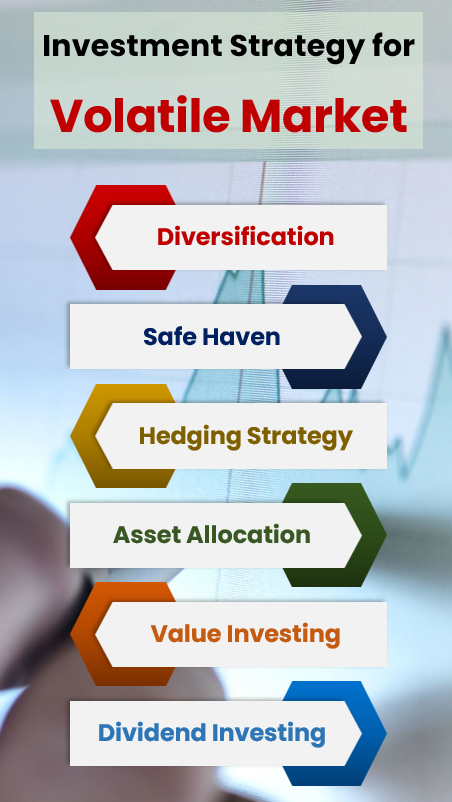Investment Strategies for Volatile Markets
Introduction:
In the ever-changing landscape of financial markets, volatility can be both a daunting challenge and a promising opportunity. Investors often find themselves in a constant dance with uncertainty, and the ability to navigate through market turbulence becomes a critical skill. In this article, we will explore gentle investment strategies designed to weather the storm of volatile markets. Our focus will be on a long-term approach, particularly emphasizing the advantages of incorporating index strategies into your investment portfolio.
Understanding Volatile Markets:
Before delving into strategies, let’s take a moment to understand what we mean by volatile markets. Volatility refers to the degree of variation of trading prices over time. Factors such as economic conditions, geopolitical events, and investor sentiment contribute to market volatility. In times of uncertainty, emotions can run high, leading to impulsive decisions and increased risk.
Investor Behavior in Volatile Markets:
The first step in navigating volatile markets is to acknowledge the impact of investor behavior. Emotional reactions often drive short-term market movements, and understanding these behaviors is crucial for making informed decisions. Fear and greed can lead to irrational decision-making, and recognizing these tendencies allows investors to take a more measured approach.
Diversification Strategies:
One of the cornerstone principles of investment, especially in volatile markets, is diversification. A diversified portfolio spreads risk across different asset classes, reducing vulnerability to the fluctuations of any single investment. Investors should explore various assets, including stocks, bonds, and alternative investments, to create a well-rounded and resilient portfolio.


Traditional safe-haven assets like gold and bonds often attract investors during times of market uncertainty. These assets can provide a hedge against market downturns, offering stability when other investments may falter. In addition to traditional safe havens, consider alternative investments such as cryptocurrencies or defensive stocks that may perform well in turbulent times.
Hedging Strategies:
Hedging involves using financial instruments to offset potential losses in other investments. Options, futures, and other derivatives can be employed to hedge against adverse market movements. While hedging can be complex and may not be suitable for all investors, it can serve as a valuable tool for risk management in volatile markets.
Tactical Asset Allocation:
Tactical asset allocation involves adjusting your portfolio based on prevailing market conditions. This strategy allows investors to capitalize on opportunities and manage risks actively. In volatile markets, periodically reassess your asset allocation to ensure it aligns with your investment goals and risk tolerance.
Value Investing in Volatile Markets:
Value investing, popularized by legendary investors like Warren Buffett, involves identifying undervalued assets with the potential for long-term growth. During market volatility, opportunities may arise to acquire quality stocks at discounted prices. Patiently identifying value in the midst of market fluctuations can yield favorable returns over time.
Dividend Investing:
Dividend-paying stocks provide a steady stream of income, offering investors a buffer against market volatility. Companies with a history of consistent dividend payments often demonstrate financial stability and resilience. Including dividend-paying stocks in your portfolio can provide both income and a measure of stability during turbulent market conditions.
Active vs. Passive Investing in Volatile Markets:
The debate between active and passive investing takes center stage in discussions about investment strategies. Active investors seek to outperform the market through hands-on management, while passive investors opt for a more laid-back approach, typically through index funds. In volatile markets, a balanced combination of both strategies may provide stability and growth potential.
The Role of Technology in Volatile Markets:
In today’s digital age, technology plays a significant role in shaping investment strategies. Algorithmic trading and robo-advisors leverage advanced algorithms to make data-driven investment decisions. Investors can harness technology to stay informed, automate portfolio management, and make more informed decisions during periods of market volatility.
Investing in Innovation and Growth:
While market volatility presents challenges, it also brings forth opportunities, especially in innovative and growing sectors. Consider allocating a portion of your portfolio to companies and industries positioned for future growth. Staying informed about emerging trends and technologies can help investors identify potential opportunities amid market fluctuations.
In the context of volatile markets, which investment strategy mentioned in this article resonates with you the most, and why? Whether it’s diversification, value investing, dividend investing, index strategies, or another approach, we’d love to hear about your preferences and insights. Share your thoughts and experiences in the comments below!
Index Long-Term Strategy:
Amid the myriad of investment strategies, the index long-term strategy stands out for its simplicity and effectiveness. Index funds, which passively track a market index, offer investors broad exposure to the market with minimal effort. This approach aligns with the philosophy of long-term investing, as investors ride the overall market trends rather than attempting to outsmart it.
The beauty of an index long-term strategy lies in its low cost, diversification, and the historical upward trajectory of the overall market. Index funds provide exposure to a broad range of stocks, spreading risk and capturing the overall market’s potential for growth.
Index investing encourages a buy-and-hold mentality, discouraging frequent trading and market timing. This aligns well with the principles of long-term investing, emphasizing the importance of time in the market rather than trying to time the market. Over extended periods, major market indices have historically shown an upward trajectory, reflecting the overall growth of the economy.
Conclusion:
In conclusion, navigating volatile markets requires a blend of prudence, strategic thinking, and a commitment to a long-term perspective. Investors should approach the challenges of market volatility with a gentle touch, acknowledging the emotional aspects of investing while adhering to sound investment principles.
While various strategies exist, the index long-term strategy stands out for its simplicity, cost-effectiveness, and alignment with the principles of long-term investing. By incorporating the strategies discussed in this article, investors can build a resilient portfolio that weathers the storms of market volatility and capitalizes on opportunities for long-term growth. Remember, the key is to stay informed, stay patient, and stay focused on your long-term investment goals.
Happy Investing!
This article is for education purpose only. Kindly consult with your financial advisor before doing any kind of investment.

